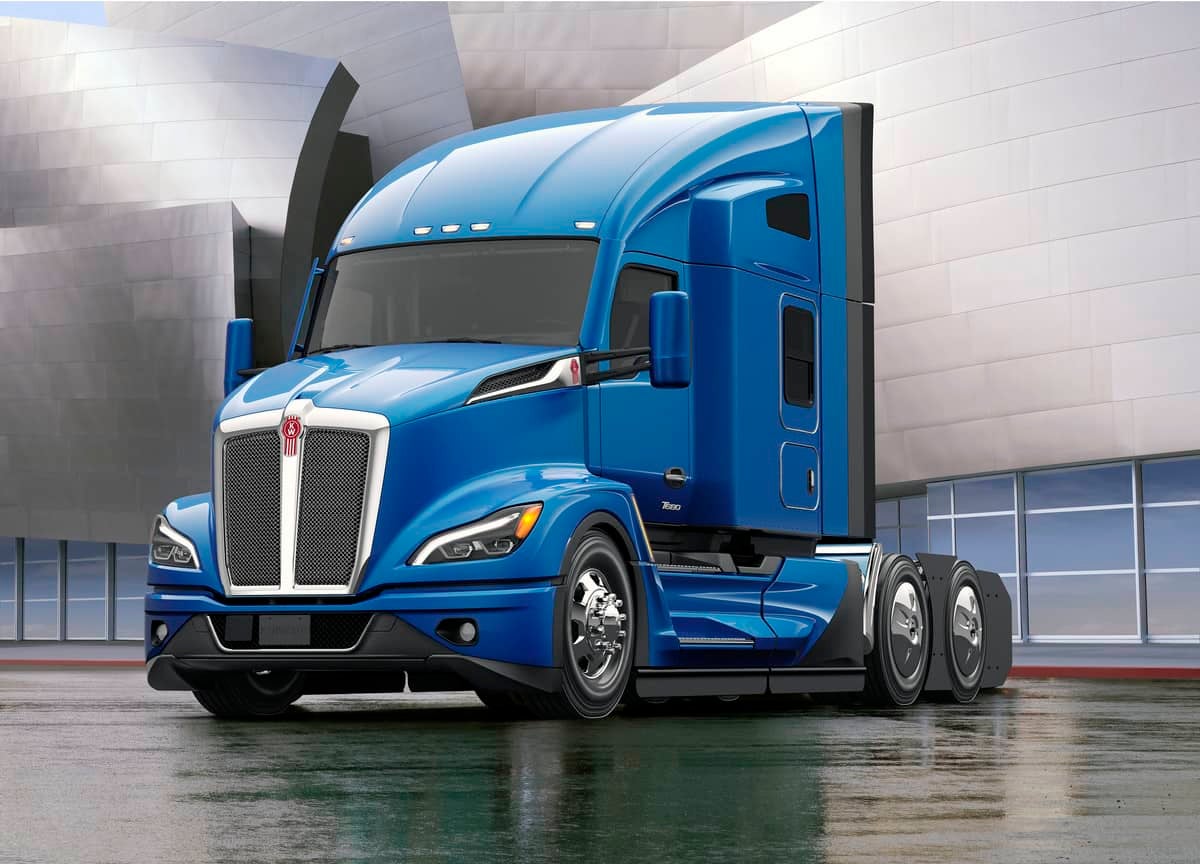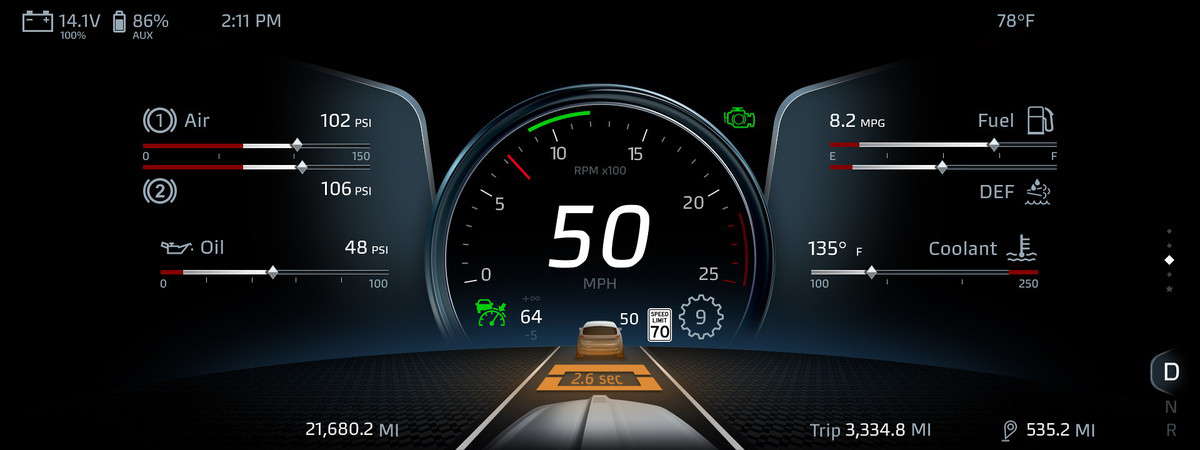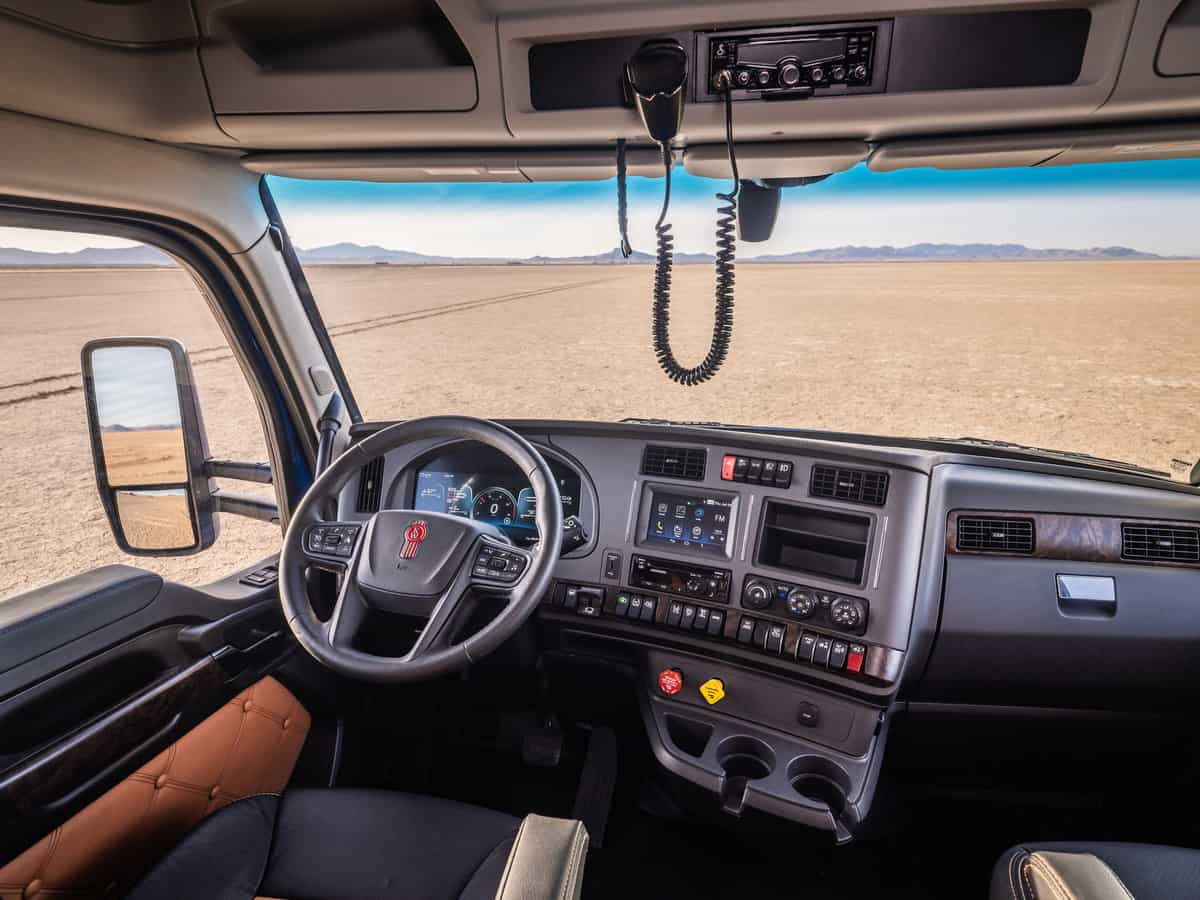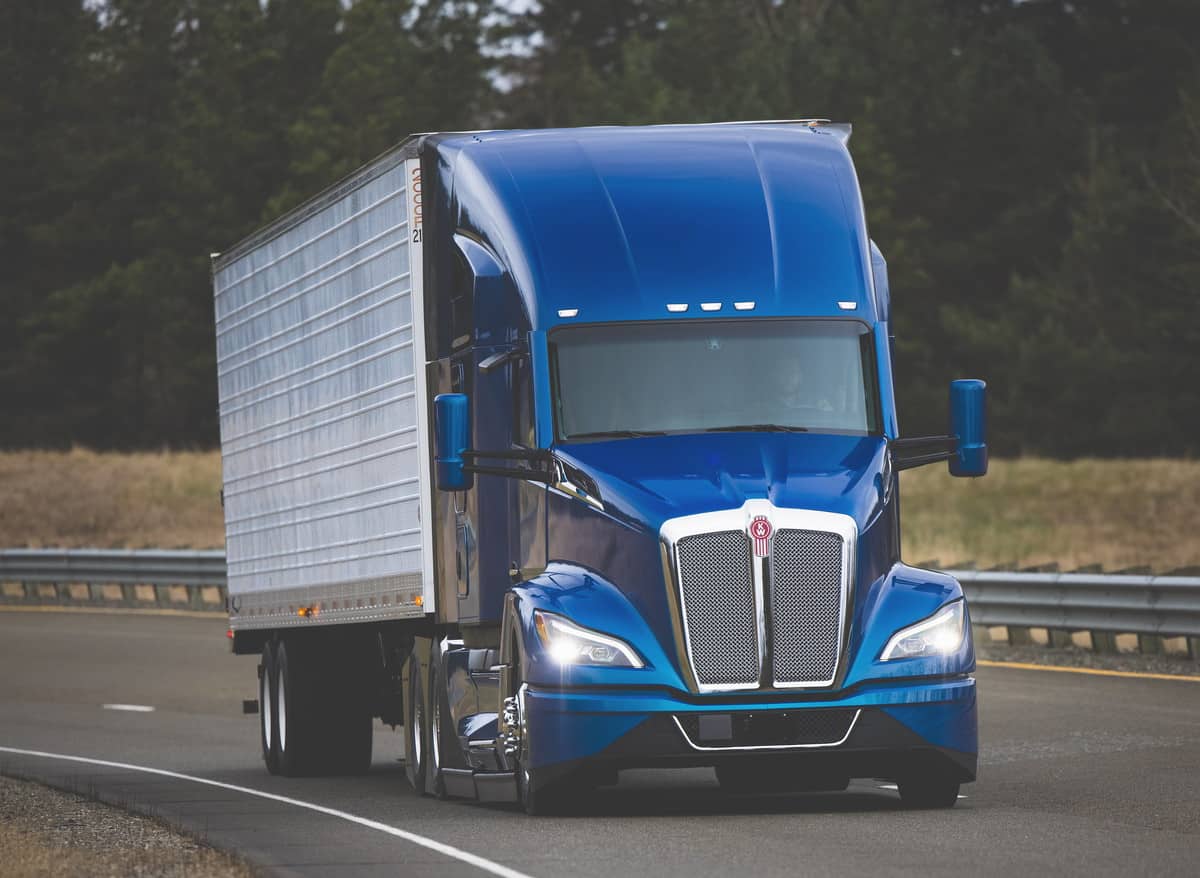The current generation Kenworth T680 manages airflow efficiently. A refreshed 2021 model coming later this year takes that to the next level — manipulating currents under the chassis as well as around the truck.
The result is up to 6% better fuel economy for the new model compared with a similarly equipped T680. The hood of the new model is 8 inches narrower than today’s T680, introduced in 2012. A restyled bumper keeps the same approach angle and ground clearance.

“Changes to the hood and bumper keep air flow closer to the cab and reduce turbulence,” Kenworth Chief Engineer Joe Adams said.
Kenworth revealed the new model virtually on Thursday evening at its headquarters in Kirkland, Washington. It shares many of the changes made to the Peterbilt Model 579, revealed a week earlier. Kenworth and Peterbilt are sibling brands of PACCAR Inc. (NASDAQ: PCAR).
Other T680 enhancements:
- 15-inch digital display operated from the steering wheel
- Optional LED headlamps with built-in infrared heater to quickly clear ice and snow
- Standard LED side turn indicator
- Additional optional advanced driver assistance systems (ADAS)
- The more fuel-efficient 2021 PACCAR MX-13 12.9-liter engine seamlessly integrates with the PACCAR 12-speed transmission and PACCAR 40K axles
- A 5.5-inch optional storage shelf on sleeper cab models with two LED lights on the underside to provide lower bunk lighting
Aerodynamic improvements
Kenworth introduced the industry’s first truly aerodynamic design with the T600 in 1985. For the refreshed T680, Kenworth used simulations and wind tunnel testing to verify the performance of each component. That included a vane near the windshield that reduces air wake next to the side windows.
Adams declined to say how much of the fuel efficiency gain comes from aerodynamics. The new 2021 PACCAR MX-13 engine, which meets Environmental Protection Agency (EPA) regulations, also improves fuel economy.
But the changes, many of them optional, include an air dam design that guides and controls under chassis airflow while protecting the radiator. A ducting system within the hood structure features a passive flap, or air shutter, which opens and closes behind the fender based on air pressure and wind conditions.
General Motors Co. (NYSE: GM) debuted active air shutters on its Chevrolet Cruze compact sedan 12 years ago.
Under-cab chassis fairings with rolled edges manage airflow off the hood. A new attachment system makes replacing a damaged fairing faster and easier, Adams said.
Behind the cab, optional side extenders cover 28 inches to help close the gap between the tractor and trailer, and smooth airflow from the top and sides of the tractor onto the trailer. Fleets can order openings on either side of the tractor for frame and component access. Tandem drive axle fairings that smooth air from the chassis also are available.
Digital display allows 4,500 gauge combinations
The T680 and its Peterbilt sibling both get a standard 15-inch digital display, which supplies information far beyond the capability of analog gauges. Drivers can personalize how much data they see. Pressing buttons on the steering wheel scrolls up and down through 38 functions, all centrally displayed. The current T680 displays 23 functions to the side of the dash.


“We followed the methods of the Human-Centered Design process,” Adams said. “Drivers want contextually relevant information when they need it.”
The digital dash allows drivers to select between two minimized views, a basic view and a maximized view. The minimized views show only the truck speed, tachometer and standard content in the header and footer area. The maximized view adds gauges for axle temperatures, torque, air filter and brake application.
The display system supports nearly 50 layouts with more than 4,500 gauge view combinations from which a driver could create a “favorites” view. In all views, the driver will be altered to warnings or faults.
“While the factory layout of content is prioritized and intuitive, we wanted to give drivers the quick and easy access to information and a layout that fits their needs,” Adams said.
The functionality extends to when the truck is parked. Pressing an exterior self-test switch activates a full systems check, analyzing and summarizing the status of multiple systems. When the driver shuts off the truck, the screen switches to a trip summary view that displays average fuel economy, idle time, cruise control use and potential mechanical issues.
“The in-cab technology we’re able to equip today’s trucks with has come a long way in just a few years, “ Adams said. Because the system has no mechanical parts, it is expected to last for 1 million miles and be more reliable than traditional instruments.
Advanced safety systems
The T680 offers a host of safety systems, several based on the standard Bendix Fusion safety suite. Optional Lane Keeping Assist (LKA), which Daimler Trucks North America first offered in its 2020 Class 8 Cascadia tractor, is offered for the first time. LKA uses camera input to identify when the truck is leaving its lane and nudges it back to the center.
Another Bendix-based feature is optional torque-assisted steering, which reduces driver fatigue by adding torque to the steering column. Volvo Trucks North America brought Volvo Dynamic Steering technology from Europe for the 2020 model year.
The additional torque reduces steering strain at low speed and adjusts to improve stability at road speeds when encountering crosswinds, highway crowning, soft shoulders, or emergency situations like tire failure.
The T680 also includes adaptive cruise control, which “reads” traffic conditions via front-facing radar. It modulates the throttle and brakes to keep the truck at a preset distance from the vehicle in front of it. When the slowdown clears, the system accelerates the truck back to the set speed.
The lane departure warning uses lane markings to sense drifting from fatigue or distraction. When active, it continually monitors the truck’s location in relation to lane markings and emits an audible warning when an unsignaled lane change is detected.
Collision mitigation will automatically apply brakes if the drive ignores warnings about a potential crash. Side object detection monitors the passenger side of the truck and uses audible and visual alerts to let the driver know when an unseen object or vehicle has entered certain zones.
Related articles:
Peterbilt reveals major redesign of flagship Class 8 Model 579
Volvo Trucks imports dynamic steering technology from Europe
2020 Freightliner Cascadia evolves into technological tour de force










